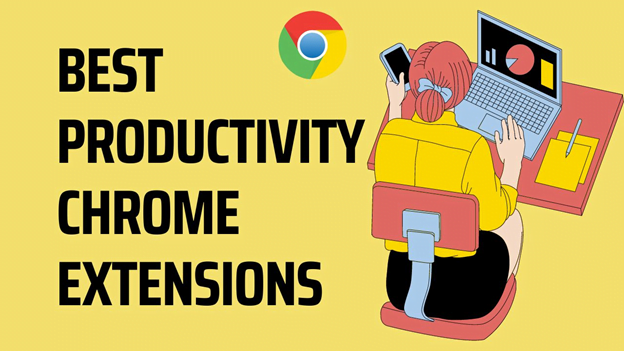Maximizing the Benefits of a Structured Social Media Plan
Social media is an essential tool for businesses looking to reach their target audience and promote their brand. In today’s digital age, having an active and consistent presence on social media platforms is crucial for businesses looking to stay ahead of the competition.
However, managing your social media accounts can be time-consuming, and it’s easy to get bogged down by the day-to-day demands of creating and posting content. This is where a social media content calendar comes in. A social media content calendar helps you to plan and schedule your posts in advance, so you can ensure that your content is consistent, relevant, and engaging.
In this article, we will show you how to create a social media content calendar to help you organize and optimize your social media presence.
Step 1: Define Your Objectives
The first step in creating a social media content calendar is to define your goals and objectives. Ask yourself what you want to achieve with your social media presence. Do you want to increase brand awareness, generate leads, or drive traffic to your website? Once you have a clear understanding of what you want to achieve, it will be easier to plan your content and determine the type of posts that will help you reach your goals.
Having clear objectives for your social media presence will help you to prioritize your content and focus on the most important tasks. For example, if your primary objective is to generate leads, you may want to prioritize posting educational and informative content that provides value to your target audience.
On the other hand, if your goal is to increase brand awareness, you may want to focus on posting more visually-appealing content, such as images or videos, that showcases your brand and products.
Step 2: Determine Your Target Audience
To create an effective social media content calendar, you need to understand your target audience. This will help you to create content that resonates with them and is more likely to drive engagement. Think about their age, location, interests, and buying behavior.
Knowing your target audience will also help you to determine the best times to post your content. For example, if your target audience is made up of working professionals, you may want to schedule your posts for the early morning or after work hours when they are most likely to be checking their social media accounts.
On the other hand, if your target audience is made up of teenagers or young adults, you may want to schedule your posts for the evening when they are most likely to be online.
Step 3: Plan Your Content
Once you have a clear understanding of your objectives and target audience, it’s time to start planning your content. Consider the type of posts you want to share, such as articles, videos, images, and infographics. You can also plan your content around holidays, special events, or promotions.
One of the benefits of a social media content calendar is that it allows you to plan your content in advance and ensure that it is consistent and relevant. For example, you may want to create a theme for each day of the week.
On Monday, you can focus on sharing motivational quotes or tips to help your target audience start the week off right. On Wednesday, you can focus on sharing behind-the-scenes content that gives your audience a glimpse into your brand and products.
On Friday, you can focus on sharing fun and lighthearted content to help your audience relax and unwind.
Step 4: Schedule Your Posts
Finally, you need to schedule your posts to ensure that your content is consistent and organized. You can use a social media management tool, such as Hootsuite or Buffer, to schedule your posts in advance and track their performance. These tools allow you to schedule your posts for multiple social media platforms, so you don’t have to worry about logging into each account every day to post content.
When scheduling your posts, it’s important to consider the best times to post based on your target audience and the type of content you’re sharing. You can use tools like Hootsuite Insights or Google Analytics to track your social media metrics and determine the best times to post.
You can also use tools like Canva or PicMonkey to create visually-appealing images or graphics for your posts.
Step 5: Measure Your Results
Once you have created and scheduled your social media content calendar, it’s important to measure your results. You can use tools like Hootsuite Analytics or Google Analytics to track your social media metrics, such as engagement rates, reach, and click-through rates. This information will help you to determine what’s working and what’s not, and make changes to your social media strategy as needed.
Step 6: Utilize Relevant Hashtags
One of the most important elements of a successful social media strategy is using relevant hashtags. Hashtags help increase the visibility of your posts and make it easier for your target audience to find and engage with your content. Consider using popular industry-specific hashtags, as well as more generic hashtags, such as #socialmedia or #contentmarketing.
Step 7: Incorporate User-Generated Content
Another great way to engage your target audience and increase brand awareness is to incorporate user-generated content into your social media content calendar. Encourage your followers to share their own experiences or thoughts on your brand by using specific hashtags or running contests or promotions.
User-generated content can also help build trust and credibility with your target audience.
Step 8: Mix It Up with Different Content Formats
To keep your social media presence interesting and engaging, it’s important to mix up the type of content you share. Consider incorporating different formats, such as infographics, videos, live streams, and podcasts, into your content calendar. This will help to keep your followers engaged and interested in your brand.
Step 9: Plan for Crisis Management
Finally, it’s important to plan for crisis management in your social media content calendar. This means having a plan in place for how to respond to negative comments or negative events that could impact your brand’s reputation. Make sure you have a team in place that is trained on how to respond to negative comments or events and how to protect your brand’s reputation.
In conclusion, a social media content calendar is an essential tool for businesses looking to maximize their social media presence. By following the steps outlined in this article, you can create a structured, user-friendly, and SEO-friendly plan that will help you reach your goals, engage your target audience, and protect your brand’s reputation.
By utilizing relevant hashtags, incorporating user-generated content, mixing up your content formats, and planning for crisis management, you can ensure that your social media presence is effective and engaging.


